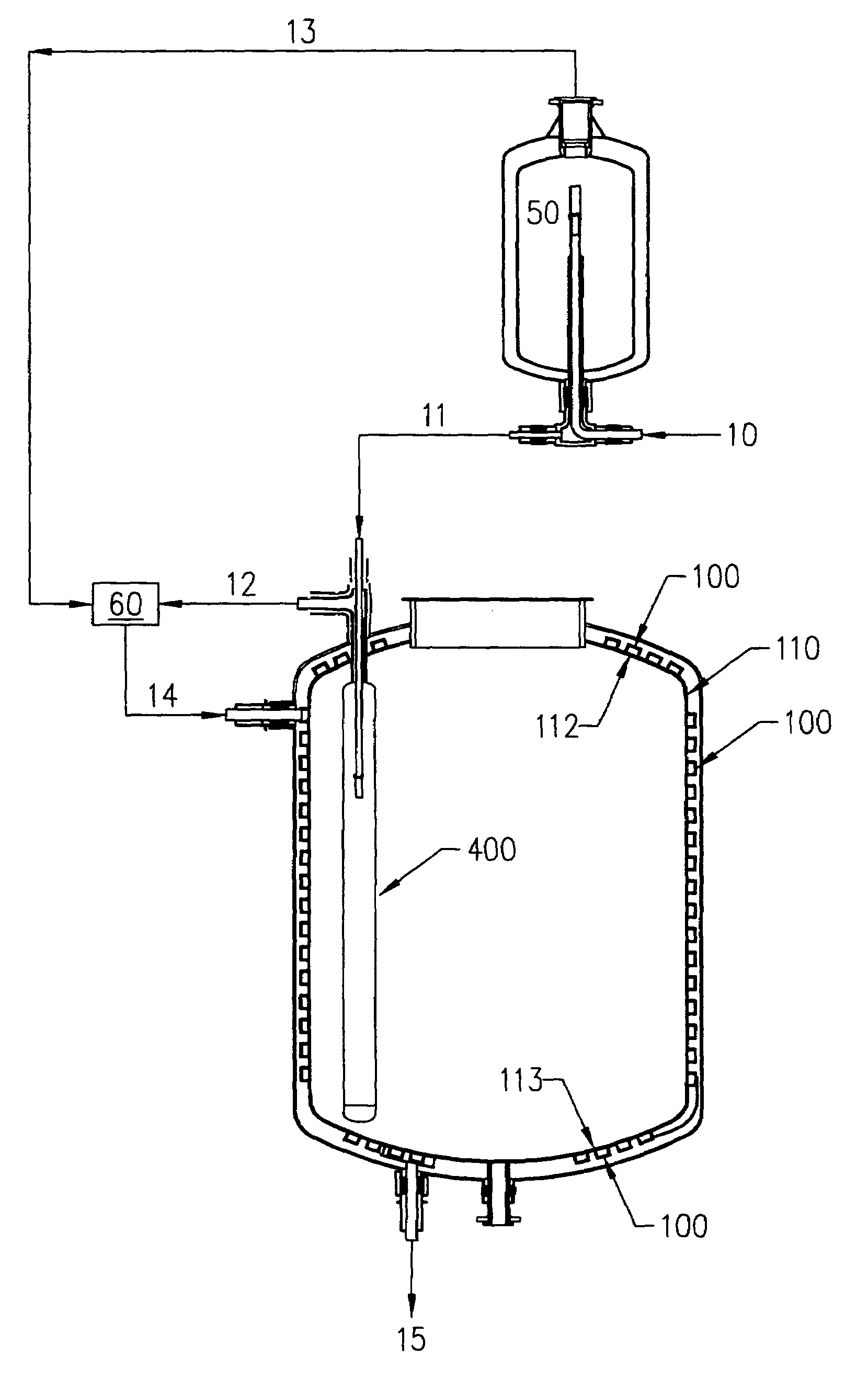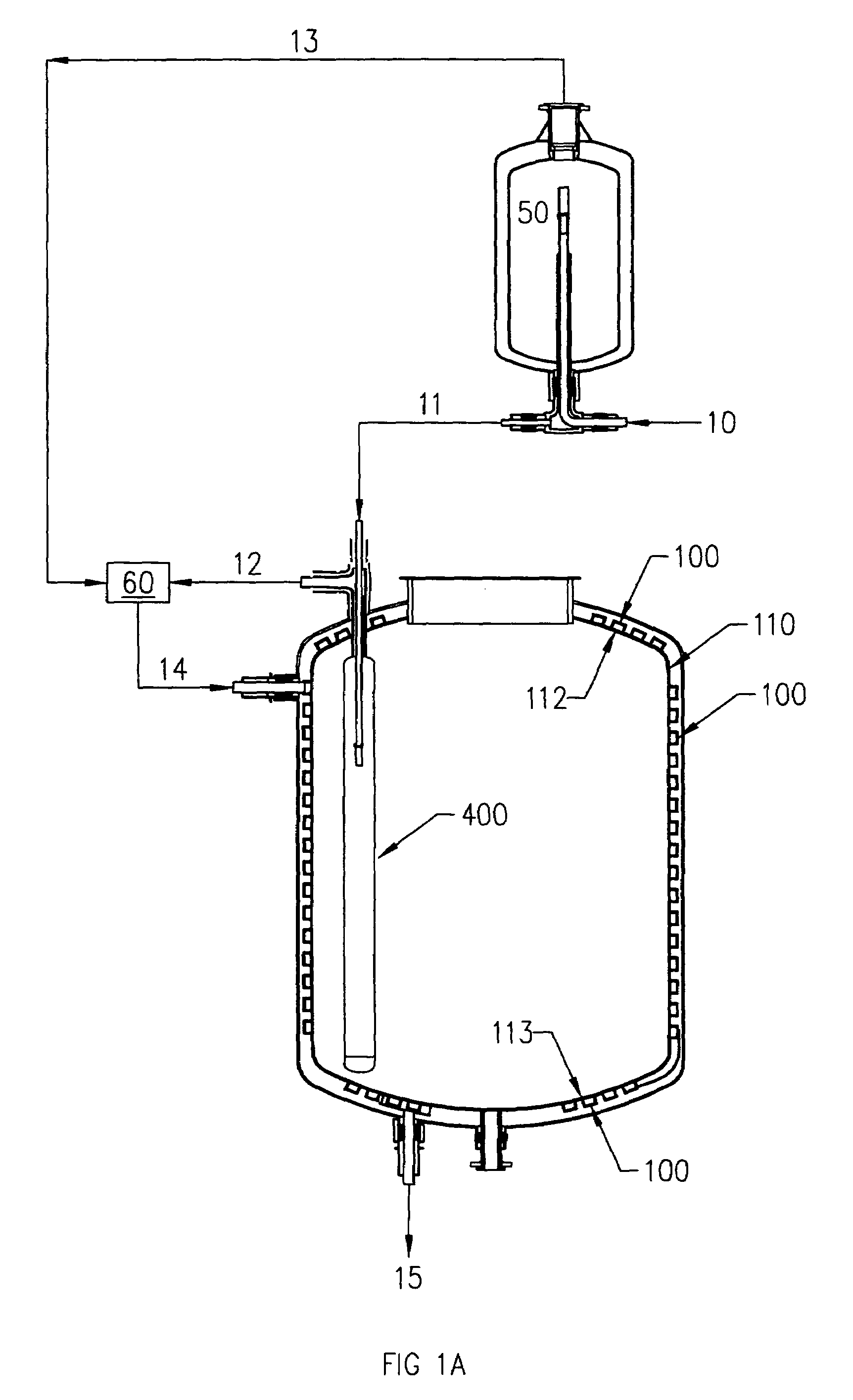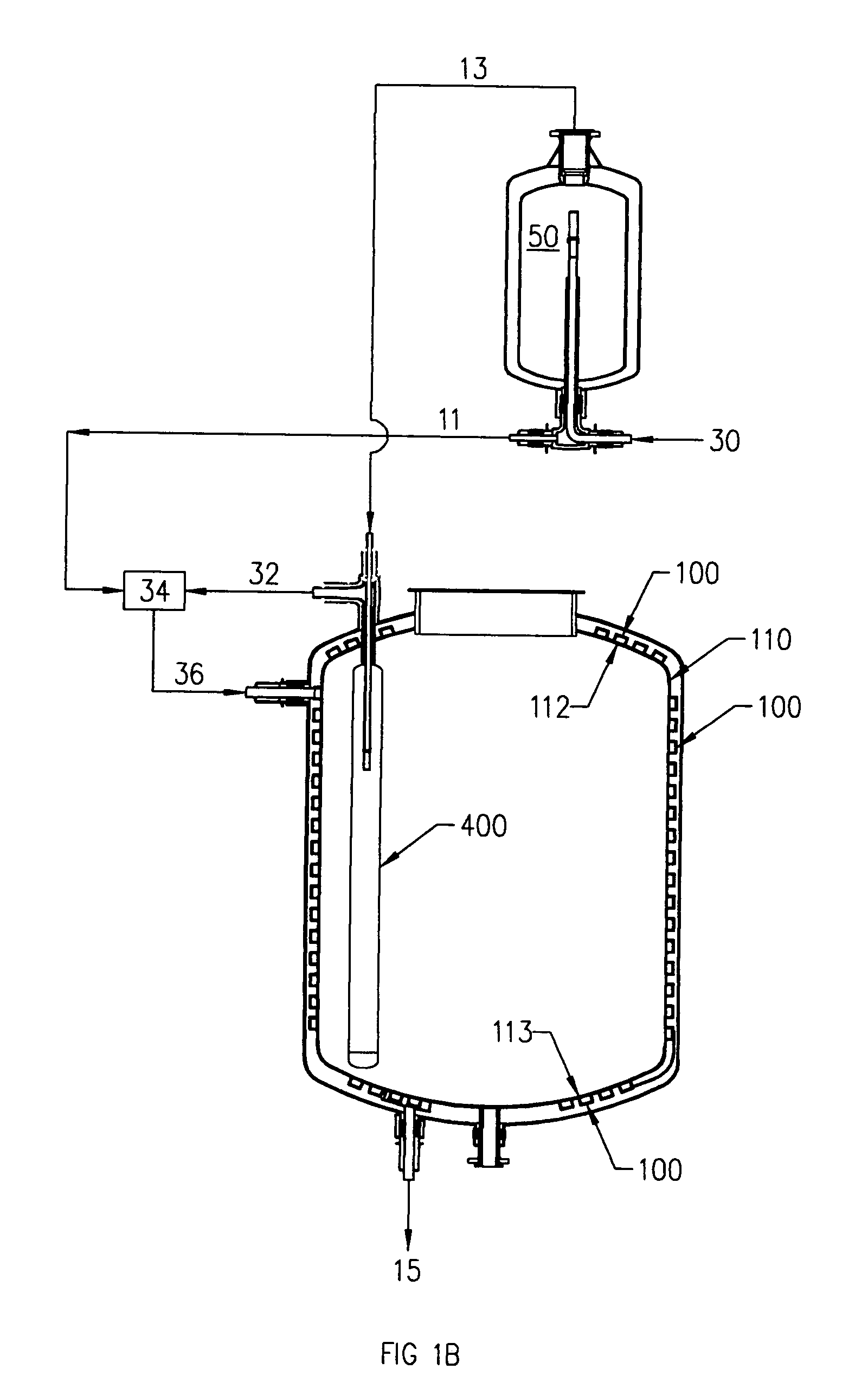Temperature controlled reaction vessel
a reaction vessel and temperature control technology, applied in the field of chemical or biological reactors, can solve the problems of insufficient heat of reactants, method fails to address the heat of reaction, temperature of reactants to produce undesirable products, etc., and achieves improved heat transfer, increased section modulus of vessel walls, and improved mechanical strength of reactor walls
- Summary
- Abstract
- Description
- Claims
- Application Information
AI Technical Summary
Benefits of technology
Problems solved by technology
Method used
Image
Examples
Embodiment Construction
[0042]In the prior art, increasing reactor size (diameter and length) affects heat transfer to the reactor contents as the distance from the reactor external jacket to the centerline of the reactor increases (this is the radius). The present invention eliminates this problem as the insertion of isothermal mixing baffles in the reactor contents brings heat sinks (cooling) or sources (heating) to the contents as required to achieve temperature uniformity.
[0043]Since most reactors are basically cylindrical, there is a circular interface region between the highest level of the content and the empty (head) space above it. The ratio of this content / head space cross-sectional area to the volume of the content increases with increasing level of content.
[0044]With good mixing and temperature uniformity, the reactions in the content occur homogeneously in the bulk of the liquid content. Evolved gases, however, must pass through the circular content / head space interface. Therefore, as the reac...
PUM
| Property | Measurement | Unit |
|---|---|---|
| pressures | aaaaa | aaaaa |
| temperature | aaaaa | aaaaa |
| thickness | aaaaa | aaaaa |
Abstract
Description
Claims
Application Information
 Login to View More
Login to View More - R&D
- Intellectual Property
- Life Sciences
- Materials
- Tech Scout
- Unparalleled Data Quality
- Higher Quality Content
- 60% Fewer Hallucinations
Browse by: Latest US Patents, China's latest patents, Technical Efficacy Thesaurus, Application Domain, Technology Topic, Popular Technical Reports.
© 2025 PatSnap. All rights reserved.Legal|Privacy policy|Modern Slavery Act Transparency Statement|Sitemap|About US| Contact US: help@patsnap.com



